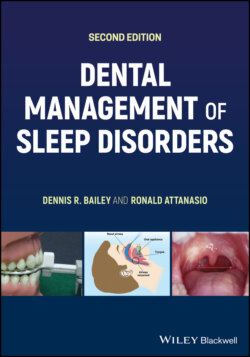Читать книгу Dental Management of Sleep Disorders - Ronald Attanasio - Страница 73
The International Classification of Sleep Disorders (ICSD)
ОглавлениеIn 1990, the ICSD was first published as a joint effort between the ASDA, European Sleep Research Society, the Japanese Society of Sleep Research, and the Latin American Sleep Society [6]. It was developed mainly for diagnostic, epidemiologic, and research purposes. It was intended to enhance communication relative to sleep disorder research for the international community.
Since the pathophysiology of many of these sleep disorders was not well understood at that time, the ICSD was based on the most common or major symptoms. These consisted primarily of insomnia, excessive sleepiness, and parasomnias (abnormal events that would take place while sleeping).
In 2005, the second edition of the ICSD was published and this made minor changes and updates to the original ICSD. As more research on the various sleep disorders was being published, the need to further revise and update the classifications to be more relevant became evident. In 2011, the need to have a classification system that was based as much as possible on the most current evidence available was initiated that resulted in the third edition. The third edition was basically similar in structure to the second edition as it relates to various clinical categories. In addition an effort was made to coordinate the ICD‐10‐CM codes where possible. This was not always practical because there was no total agreement between the ICD coding and the coding of sleep disorders based on the criteria established in the third edition.
The third edition of the ICSD has a large number of sleep disorders that are of little to no consequence to the practicing dentist. The intent therefore is to be aware of the various categories of those disorders, and attention will be given to those that are most important and are most relevant. If there is interest in reviewing all of the sleep disorders in more detail, it is advisable that the ICSD‐3 be obtained from the AASM. This would provide more detail(s) regarding all of the sleep disorders and in addition would be educational. Each of the sleep disorders is accompanied by discussion as well as a bibliography of evidence that supports the diagnosis as being clinically relevant. The third edition was the outcome of a task force that oversaw the development of this project, and in addition there were specific workgroups made up of experts related to the respective categories.
